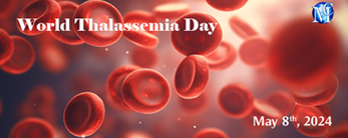eISSN: 2469-2778


Clinical Report Volume 8 Issue 1
1Yashoda Hematology Clinic, India and Ruby Hall Clinic, Pune
2Anjali Diagnostic Pathology Laboratory, India
Correspondence: Vijay Ramanan, Yashoda Hematology Clinic, Pune, India
Received: January 07, 2020 | Published: February 6, 2020
Citation: Vijay RM, Kelkar K. First Haploidentical transplant in the world for HIV-positive Thalassaemia major with resultant prolonged viral suppression. Hematol Transfus Int J. 2020;8(1):8. DOI: 10.15406/htij.2020.08.00213
We present the case of a 13 year old girl, who was diagnosed with thalassemia major at the age of 8 months. Initially, she had been receiving blood transfusions every 28 days, which was later increased to every 18 days. Before transplant, she had received a total of 200 transfusions. She was classified as Lucarelli Class III with hepatosplenomegaly and had ferritin levels over 2000 ng/ml.
Allogenic stem cell transplant is a viable option in patients with thalassemia major. However, there was no sibling match for an allogenic stem cell transplant in this case. Hence, a search for unrelated match was initiated in 2012, which did not avail any suitable donors. Consequently, a haploidentical transplant from the half-matched mother was planned. At that time, CCR5 testing was not available at our institute. During the one year period of gathering the finances to perform the transplant, the patient was detected with HIV on routine screening. The patient was started on anti-retroviral therapy (ART) with abacavir and dolutegravir. However, viral load of HIV remained high. Hence, she was put on HAART.1
Since the patient was planned for haploidentical transplant, she underwent pre-conditioning with Bu-Cy. The transplant was performed on 29/01/13. Post-transplant GVHD prophylaxis was administered with cyclophosphamide/cyclosporine.
Viral Load: Pre-transplant- 410000; Post Transplant-<47/cmm
CD4- Pre-Transplant- 34.63; Post Transplant (6 months post-Transplant)-555
Busulfan 16 mg per kg; Cyclophosphamide (200mg/kg) with ATG
BM harvest- 245 ml; Cell Dose- 6 x 108 per kg
Post Transplant Cyclophosphamide 40mg per kg was used on Day 3,4 with Cyclosporine.
During the second month after first transplant, she had graft rejection, which may be attributed to HAART.
She later underwent second peripheral blood stem cell haploidentical transplant on 18/02/2013. Fortunately, this time, she did not experience graft rejection. PBSCT Volume-225 ml with cell dose of 13.06 x108 per kg
Since the second transplant, her HIV viral load has been undetectable. She was transfusion independent for 9 months after second haploidentical transplant, after which she developed anaemia. She was started on a novel therapy with thalidomide, wheatgrass, L-glutamine, and resveratrol based on our novel paper1. She responded well to this therapy and has been off transfusion for last 6 years.
At present, the patient is independent from transfusion and is intermittently taking ART medications. Her most recent viral load was undetectable. She is pursuing higher studies and plans to marry and lead a normal life.
This is first reported case of Thalassemia Major with HIV who has survived double Haploidentical transplant in the world. Remarkable finding was the prolonged suppression of HIV (probably cure) post transplant for close to 7 years.
None.
Authors declare that there is no conflict of interest in our article.

©2020 Vijay, et al. This is an open access article distributed under the terms of the, which permits unrestricted use, distribution, and build upon your work non-commercially.
 World Thalassemia day is observed on May 8th. Thalassemia is a genetic blood disorder that causes the body's hemoglobin level to be lower than normal, which makes you feel exhausted. This year the main motto of this day is to Empower Lives, Embracing Progress: Equitable and Accessible thalassemia treatment for all. Related submissions received for this event will be offered with 30% discount towards publication.
World Thalassemia day is observed on May 8th. Thalassemia is a genetic blood disorder that causes the body's hemoglobin level to be lower than normal, which makes you feel exhausted. This year the main motto of this day is to Empower Lives, Embracing Progress: Equitable and Accessible thalassemia treatment for all. Related submissions received for this event will be offered with 30% discount towards publication.